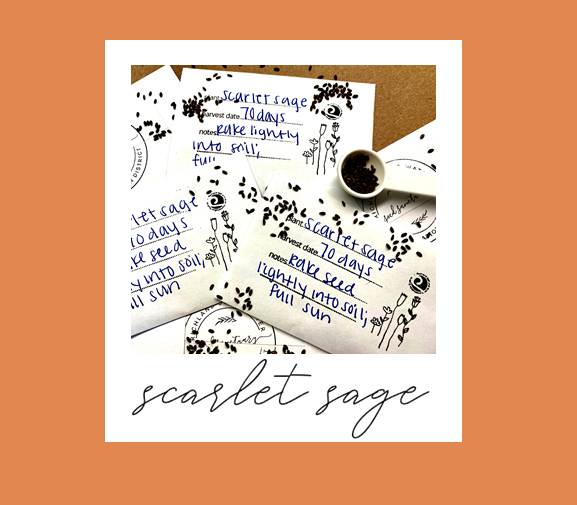
Download .pdf version
Every garden space needs pops of color to contrast with the sea of summer green, but few gardeners are eager to spend hours in the South Carolina sun tending to a high maintenance plant. There is a flower that offers the best of both worlds: a brilliant red, low-maintenance, summertime favorite called scarlet sage.
Salvia coccinea blooms with striking red, tubular flowers from midsummer to fall. The blossoms are about an inch long, and grow in whorls around stems that can reach three feet in height. The flowers of scarlet sage look like hummingbirds, with extended stamens that resemble a hummingbird’s beak. Incidentally, blooming scarlet sage attracts hummingbirds, as well as bees and butterflies by the dozens.
Thought to be native to Mexico, scarlet sage has naturalized throughout the southeastern United States. It readily sprouts from seed and self-spreads without being invasive. Salvia coccinea has many common names, including scarlet sage, Texas sage, or bloody sage, and is one of around 900 species in the genus Salvia. The name Salvia is derived from the Latin word salveo, meaning “to save or to heal,” and refers to the medicinal properties of some of the other plants within the genus. (Salvia coccinea is a purely ornamental wildflower.) The specific epithet coccinea also originates in Latin, and translates to “scarlet-dyed.”
Salvia coccinea is in the same genus as Salvia officinalis, which is the species used for food seasoning. The flowers of scarlet sage, however, are not edible. Ingestion of scarlet sage can cause gastric distress in humans, but it is not considered poisonous to pets.
Scarlet sage is sensitive to frost in its early growing stages, and it can be started from seed indoors. If the danger of frost is past, direct sowing outdoors will do just fine: simply scatter the seed under a light covering of soil. Whether in a bed or in a container, scarlet sage should be planted in full sun with well-drained soil. In its early growing stages, the stems can be brittle and break easily. Surrounding the scarlet sage with some supports or locating it away from foot traffic will reduce stem breakage.
Though scarlet sage will bloom throughout the summer, the growing season will come to a close as temperatures begin to cool. Allow some stems to set seed during this time for birds, such as goldfinches, to nibble. Pollinators and other wildlife will love the addition of scarlet sage to the garden, and the garden will be thankful for that, too!
Scarlet sage is a featured wildflower variety in the Richland Soil and Water Conservation District’s Seed Sanctuary, which has distributed more than 2,500 free packets of vegetable, herb, and wildflower seeds to Richland County residents this month. Learn more about the Seed Sanctuary online.
References: University of Wisconsin, North Carolina State Extension, University of Florida Extension,Florida Native Plant Society, Naturalist Newsletter, Missouri Botanical Garden, Home and Gardening Network
Download .pdf version
# # #
Conservation Districts are political subdivisions of state government under the local direction of five-member Boards of Commissioners. In South Carolina, Conservation District boundaries conform to County boundaries. The Richland Soil and Water Conservation District promotes the wise use and care of natural resources for long-term sustainability.
Contact
Richland Soil and Water Conservation District
2020 Hampton Street, Room 3063A
Columbia, SC 29204
Phone (803) 576-2080
Fax (803) 576-2088
E-mail soilandwater@rcgov.us
Facebook www.facebook.com/rswcd